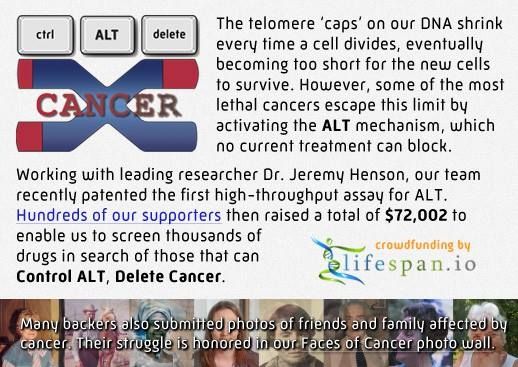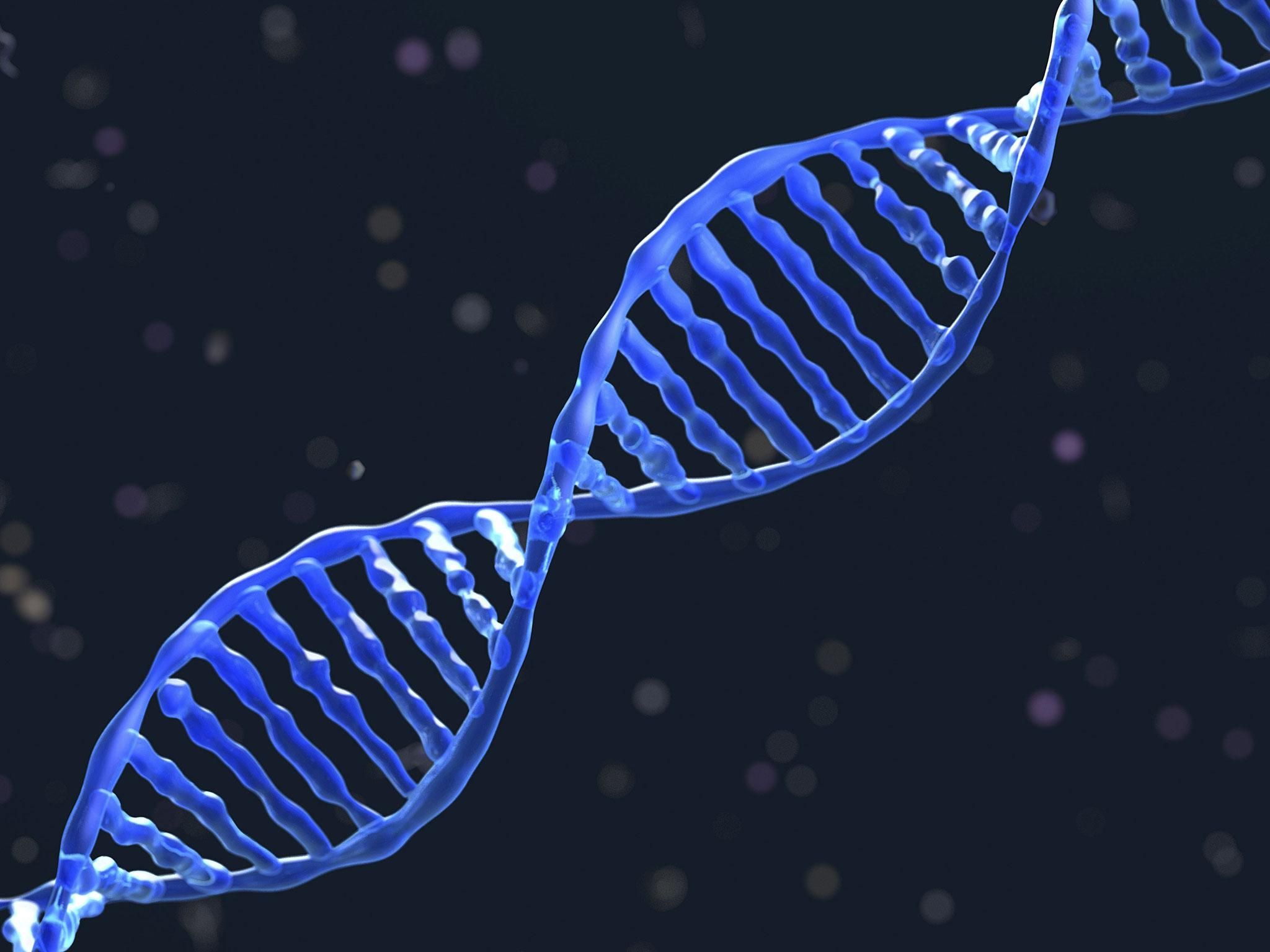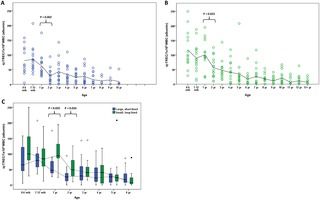While it used to be the stuff of science fiction, the technology behind the dream has advanced in recent years.



As the year moves on and we look back at the achievements this year we would be remiss to not mention the fantastic result we got for the OncoSENS fundraiser hosted on Lifespan.io. We raised an amazing $72,002 for ALT cancer research thanks to the amazing supporters we have. Thank you to everyone who helped and donated to OncoSENS to make it another victory for SENS Research and for Science!

Scientists have discovered a new way to edit DNA that could fix “broken genes” in the brain, cure previously incurable diseases and potentially even extend the human lifespan.
The breakthrough – described as a “holy grail” of genetics – was used to partially restore the sight of rats blinded by a condition which also affects humans.
Previously researchers were not able to make changes to DNA in eye, brain, heart and liver tissues.
Great to see more quality aging biomarkers arriving for researchers. Well done to Alex Zhavoronkov and his team for this brilliant work.
Pathway analysis aids interpretation of large-scale gene expression data, but existing algorithms fall short of providing robust pathway identification.

More news about SENS Research Foundation fundraiser and a look back at some of the achievements so far.
#sens #aging
Good news! Thanks to the generous pledges of new SENS Patrons, signing up for monthly donations to the SENS Research Foundation over the past two weeks since the fundraiser started, the $24,000 matching fund put up by Josh Triplett and Fight Aging! is nearly met. Just a little more left to reach the target: if you are the next person to sign up, the next year of your donations to the SENS Research Foundation will be matched dollar for dollar. But if you miss out on that, donations made before the end of the year can still be matched. The Forever Healthy Foundation’s Michael Greve, who earlier this year pledged $10 million to SENS rejuvenation research and startup companies building rejuvenation therapies, has put up a further $150,000 challenge fund. He will match all donations to the SENS Research Foundation made before the end of 2016, and there is still a way to go in order to meet that target. So help us get this done!
Why support the SENS Research Foundation, and their ally the Methuselah Foundation? Because these organizations have proven capable of using your charitable donations more effectively than any other in order to make significant progress towards an end to aging and age-related disease. For fifteen years now, the principals and their network of advocates and scientists have nudged, debated, and funded researchers to ensure that the broader research community builds the basis for human rejuvenation. Aging is an accumulation of molecular damage, and if that damage is repaired sufficiently well, a goal that modern medicine is only just starting to grapple with despite decades of evidence, then the result will be a halt to the processes of degenerative aging. An end to the disease, dysfunction, and suffering of aging.

New hope for age related macular degeneration.
The discovery of a novel protein that links aging and age-dependent retinal diseases could lead to potential new treatments for conditions that cause sight loss in later life.
In a study in mice, to be published in the journal eLife, researchers from the University of Wisconsin-Madison reveal that Transmembrane 135 (Tmem135) regulates retinal aging, and that mutations in the protein result in age-dependent disease.
Tmem135 has previously been associated with fat storage and long life in the roundworm Caenorhabditis elegans, but its molecular function has never been characterized clearly. The new study shows that irregular levels of the protein lead to symptoms of a common age-related retinal disease called macular degeneration.

Heart disease prevention measures have made some impact on mortality rates. Looking after your heart is absolutely critical for your longevity plan.
Despite the rising proportion of the older population who choose to be overweight or obese, risk of heart disease has declined somewhat in past few decades. This outcome can be attributed to prevention in the sense of at least some people taking better care of their health by specifically targeting measures such as blood pressure and blood lipid levels, coupled with prevention in the sense of treatments such as statins that also reliably influence these measures. Increased blood pressure with age, or hypertension, directly impacts risk of cardiovascular disease and other conditions by putting additional stress on tissue structures and causing the heart to remodel itself detrimentally. Higher blood lipid levels on the other hand contribute to the progression of atherosclerosis, attacking blood vessel walls to form fatty deposits that can later break to cause blockages or ruptures of blood vessels. These are all things best avoided if possible, but until the advent of rejuvenation therapies after the SENS model the best that can be done is to slow down the damage.
Quote:


Immune system decline one of the hallmarks of aging and something that we should be concerned about addressing.
The age associated decline in immune function is preceded in mammals by a reduction in thymic output. Furthermore, there is increasing evidence of a link between immune competence and lifespan. One approach to determining thymic output is to quantify signal joint T cell receptor excision circles (sj-TRECs), a method which has been developed and used in several mammalian species. Life expectancy and the rate of aging vary in dogs depending upon their breed. In this study, we quantified sj-TRECs in blood samples from dogs of selected breeds to determine whether there was a relationship between longevity and thymic output. In Labrador retrievers, a breed with a median expected lifespan of 11 years, there was an age-associated decline in sj-TREC values, with the greatest decline occurring before 5 years of age, but with sj-TREC still detectable in some geriatric animals, over 13 years of age. In large short-lived breeds (Burnese mountain dogs, Great Danes and Dogue de Bordeaux), the decline in sj-TREC values began earlier in life, compared with small long-lived breeds (Jack Russell terriers and Yorkshire terriers), and the presence of animals with undetectable sj-TRECs occurred at a younger age in the short-lived breeds. The study findings suggest that age-associated changes in canine sj-TRECs are related to breed differences in longevity, and this research highlights the use of dogs as a potential model of immunosenescence.
Citation: Holder A, Mella S, Palmer DB, Aspinall R, Catchpole B (2016) An Age-Associated Decline in Thymic Output Differs in Dog Breeds According to Their Longevity. PLoS ONE 11(11): e0165968. doi:10.1371/journal.pone.0165968
Editor: Douglas Thamm, Colorado State University, UNITED STATES
Time to hit the gym as part of your personal longevity plan.
WHO fact sheet on physical activity provides key facts and information on benefits, risks of inactivity, reasons for physical inactivity and how to increase physical activity, WHO response.